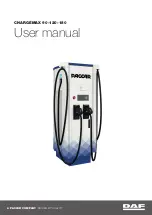
n
Lap/Shoulder Seat Belts
Both seating positions are equipped with lap/shoulder seat belts with emergency
locking retractors. In normal driving, the retractor lets you move freely while
keeping some tension on the belt. During a collision or sudden stop, the retractor
locks to restrain your body. The passenger's seat belt also has a lockable
retractor that must be properly activated when using a forward-facing child seat,
should you choose to disregard our recommendations and install one.
Not wearing a seat belt properly increases the chance of serious injury or death
in a crash, even though your vehicle has airbags.
Be sure you and your passenger always wear seat belts and wear them properly.
n
Proper Use of Seat Belts
Follow these guidelines for proper use:
• All occupants should sit upright, well back in the seat, and remain in the
position for the duration of the trip. Slouching and leaning reduces the
effectiveness of the belt and can increase the chance of serious injury in a
crash.
• Never place the shoulder part of a lap/shoulder seat belt under your arm or
behind your back. This could cause very serious injuries in a crash.
• Two people should never use the same seat belt. If they do, they could be very
seriously injured in a crash.
SAFETY INFORMATION
6 |
• Do not put any accessories on the seat belts. Devices intended to improve
comfort or reposition the shoulder part of a seat belt can reduce the
protective capability and increase the chance of serious injury in a crash.
• No one should sit in a seat with an inoperative seat belt or one that does not
appear to be working correctly. Using a seat belt that is not working properly
may not protect the occupant in a crash. Have a dealer check the belt as soon
as possible.
Not wearing a seat belt properly increases the chance of a serious injury or
death in a crash, even though your vehicle has airbags.
Be sure you and your passengers always wear seat belts and wear them
properly.
n
Seat Belt Inspection
Regularly check the condition of your seat belts as follows:
• Pull each belt out fully and look for frays, cuts, burns, and wear.
• Check that the latch plates and buckles work smoothly and the belts retract
easily. If a belt does not retract easily, cleaning the belt may correct the
problem. Only use mild soap and warm water. Do not use bleach or cleaning
solvents. Make sure the belt is completely dry before allowing it to retract.
Any belt that is not in good condition or working properly will not provide proper
protection and should be replaced as soon as possible.
SAFETY INFORMATION
| 7










































